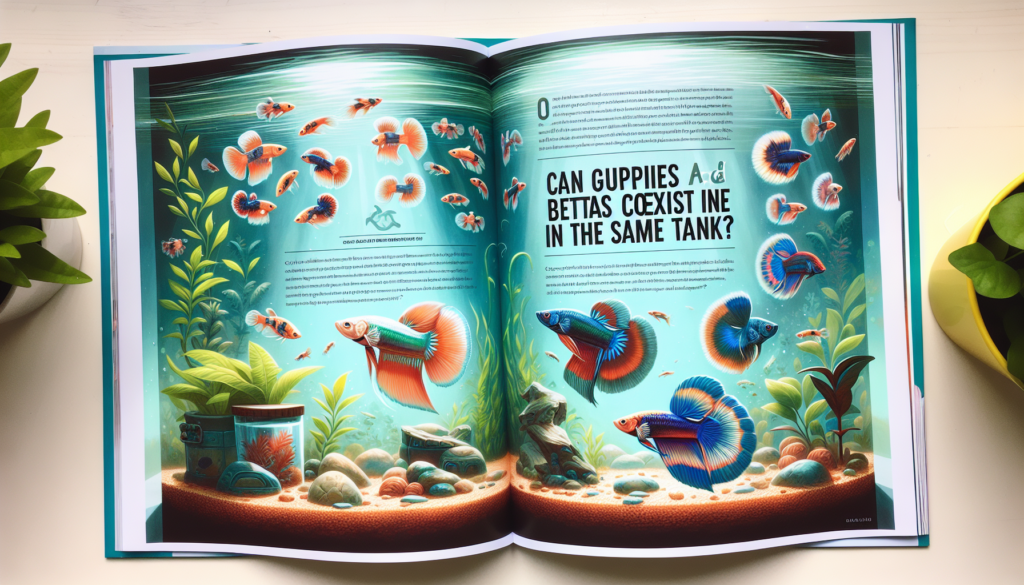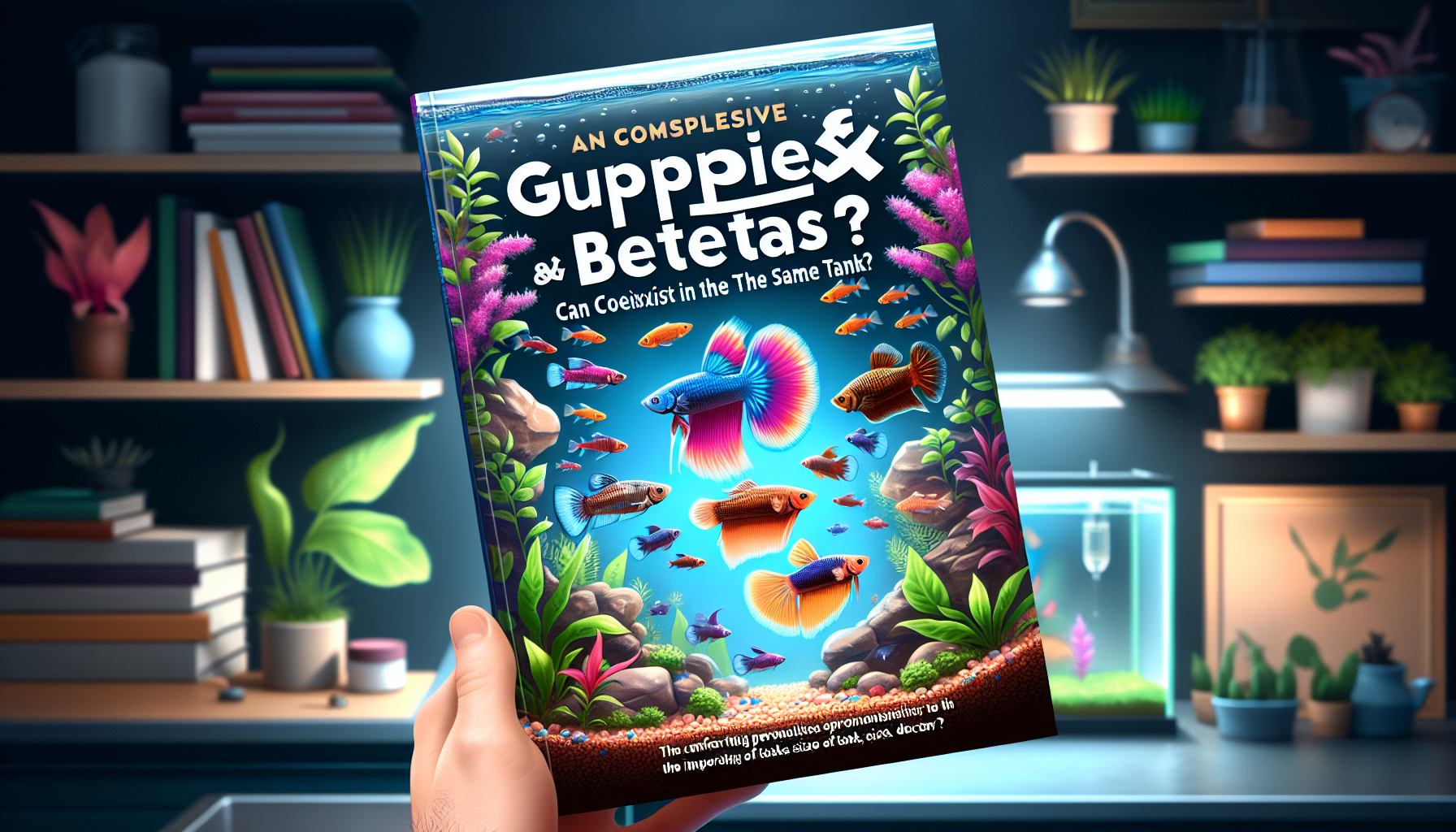Are you considering adding both guppies and bettas to your fish tank but unsure if they can coexist peacefully? This article explores the compatibility between guppies and bettas in the same tank, helping you make an informed decision about the best combination for your aquatic setup. Discover the key factors to consider, such as temperament, tank size, and proper introductions, for a harmonious cohabitation of these vibrant and captivating fish species.
The Compatibility of Guppies and Bettas
Understanding the Guppy
Guppies are small, colorful, and lively freshwater fish that are popular among aquarium enthusiasts. They are known for their vibrant colors and intricate tail patterns, making them a visually stunning addition to any tank. Guppies are generally peaceful and social creatures, thriving in groups of their own kind. They prefer to swim in the middle and top levels of the tank, with occasional visits to the bottom. Guppies are easy to care for and adapt well to various water conditions, making them a great choice for both beginners and experienced fishkeepers.
Understanding the Betta
Bettas, also known as Siamese fighting fish, are stunningly beautiful and have elaborate finnage, making them a popular choice for aquarium enthusiasts. They come in a variety of colors, making them an eye-catching addition to any tank. Bettas are known for their territorial nature, especially towards other male bettas. They prefer to swim alone and need ample space to establish their territory. While they are generally docile towards other fish, they have a tendency to become aggressive and territorial, particularly towards fish that resemble their own species.

Factors to Consider
Before considering housing guppies and bettas together, it is important to understand the compatibility differences between these two species. While both guppies and bettas are tropical freshwater fish, they have distinct behavioral and temperament variations. Guppies are generally peaceful and sociable, while bettas can display territorial behavior. Their aggression levels and compatibility can vary from fish to fish, making it crucial to carefully consider the unique characteristics of each individual before introducing them into the same tank.
Tank Size and Setup
Providing an appropriate tank size and setup is crucial for the overall well-being of both guppies and bettas. It is recommended to have a minimum tank size of at least 10 gallons to accommodate both species comfortably. This allows sufficient swimming space and reduces the chances of territorial disputes. The tank should also be equipped with proper filtration to maintain water quality and a consistent temperature range of around 78-82°F (25-28°C). Creating an aquascape with plants, rocks, and driftwood can provide hiding spots and visual barriers to reduce potential conflict.

Gender Considerations
When considering housing guppies and bettas together, it is important to take into account the gender of the fish. Female guppies and bettas tend to be more compatible compared to their male counterparts. Female guppies are generally non-aggressive and can peacefully coexist with female bettas. However, male guppies may display aggressive behavior towards female bettas, mistaking them for female guppies. Introducing male bettas with either male or female guppies can often lead to aggression and territorial disputes.
Behavioral Compatibility
The behavioral compatibility between guppies and bettas should be carefully observed to ensure a harmonious tank environment. While guppies are relatively peaceful, they may become victims of aggression from bettas, especially if their long and colorful fins attract the betta’s attention. Bettas may nip at the guppies’ fins, causing damage and stress. It is important to closely monitor their interactions and separate the fish if aggression becomes an issue.
Providing Sufficient Space
Both guppies and bettas have specific swimming and territorial needs that should be taken into consideration when housing them together. Guppies are active swimmers and appreciate open spaces to roam around. Bettas, on the other hand, require territories to establish their dominance. Providing a well-sized tank with various levels and hiding spots, such as floating plants and caves, can help cater to the needs of both species. This allows the guppies to explore and the bettas to establish their own space, minimizing potential conflicts.
Tank Decorations and Hiding Places
Incorporating suitable tank decorations and hiding places is essential to create a conducive environment for both guppies and bettas. Live or artificial plants can provide cover and security for the guppies, as well as break the line of sight between the two species, reducing stress and aggression. Caves, rocks, and ornaments can serve as hiding spots for the bettas, allowing them to establish their territory and retreat if needed. By providing adequate hiding places, the chance of conflicts can be reduced, promoting a more peaceful coexistence.
Feeding Considerations
Feeding guppies and bettas a balanced diet is vital for their overall health and well-being. While both species have similar dietary requirements, it is important to ensure that all fish in the tank receive an adequate amount of food. Care should be taken to prevent overfeeding or underfeeding, as this can lead to various health problems. Observing the feeding habits of each individual fish and adjusting the feeding routine accordingly is crucial. Additionally, providing a varied diet that includes high-quality flakes, pellets, and occasional live or frozen food can help improve their overall health and prevent aggression caused by food competition.
Monitoring and Adjustments
Constant monitoring is necessary when housing guppies and bettas together. Observing their interactions and behavior on a regular basis allows you to identify any signs of aggression or stress. If aggression becomes a persistent issue, it may be necessary to separate the fish or use tank dividers to create individual territories. In extreme cases, rehoming one of the species might be the best solution to ensure the well-being of all the fish involved. Remember, each individual fish has its own unique temperament and behavior, so adjustments may be necessary to maintain a peaceful and harmonious tank environment.
